
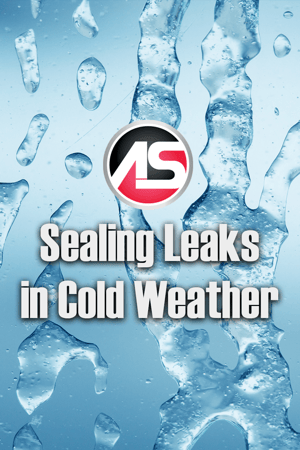 As we stated in a previous blog post, Lifting Slabs in Cold Weather, there are plenty of jobs that need to be done in the winter. This is just as true for sealing leaks as it is for slab lifting. So let's take a look at those cold weather leak seal markets. We'll also review some special considerations for conditioning leak seal material and equipment. Then we’ll leave you with a few cold temperature leak seal application tips.
As we stated in a previous blog post, Lifting Slabs in Cold Weather, there are plenty of jobs that need to be done in the winter. This is just as true for sealing leaks as it is for slab lifting. So let's take a look at those cold weather leak seal markets. We'll also review some special considerations for conditioning leak seal material and equipment. Then we’ll leave you with a few cold temperature leak seal application tips.
Cold Weather Markets
You have a variety of options for seeking jobs that are inside, out of the elements, during the winter months. Hopefully these ideas will spark more brainstorming on your part. First up we have tunnels, both pedestrian and vehicle. Tunnels often leak, sometimes significantly enough to result in quite a big job. Aquariums are another possibility. As you can imagine, there are infinite potential leak problems in a structure holding that much water. Other possible large jobs could include mines and water treatment plants (which have plenty of interior spaces with potential leak issues). On the smaller side, there are utility vaults, lift stations, manholes and elevator pits.
If you’re still up for working outside during the winter months, you’re in luck because concrete contracts during colder weather. The contraction makes cracks open wider. Wider cracks make leaks more apparent to the property owner and make them easier to repair.
Conditioning Materials and Equipment
One important point to understand is that cold weather requires you to make an extra effort to keep your materials and equipment warm. Cold material reacts slower and gets thicker. Be sure to store your materials and equipment in a heated room the night before the job. When on the jobsite, there are many ways to keep everything warm. Use an enclosed vehicle, like a box truck, enclosed trailer or pickup truck with a camper top or bed cover. Keep as much material and equipment inside the vehicle as possible when working. Use a portable heater to maintain a warm temperature. You can also use electric pail heaters to keep your resin ready for action.
Remember that it won’t do you any good to heat the resin if you’re pumping it through cold equipment. The cold steel inside the pump and the cold hose will literally suck the heat out of the resin before it gets where it needs to be. This will increase the viscosity, making it harder to mix with the water and it will slow down the reaction dramatically. So don’t neglect the equipment side of the equation!
Cold Temperature Application Tips
If you’re using a product with an accelerator, you may need to use a faster accelerator or increase your percentage. Also, bring lots of oakum. You may have to use more if the cold temperature slows down the material or the contracted concrete has made the cracks wider.
If your job requires you to inject into a structure underwater (and the water’s cold), you can use a technique called twin streaming. In this approach, you hook two valves together in parallel fashion – then inject warm water along with the resin to kick start it reacting before hitting the cold water.
Conclusion
I hope this overview has helped spark some ideas on your part for finding leak seal work during the winter months. Just remember to keep your materials and equipment conditioned and you should be fine. Have more questions about polyurethane leak seal in cold weather? Call us at 404-618-0438.
Editor's Note: This post was originally published in 2019 as Polyurethane Leak Seal in Cold Weather.



 Contrary to popular opinion, as a contractor, you don’t have to put up your equipment and rigs due to cold weather. There are many jobs to be done and many ways to keep your material conditioned. Use this season to your advantage and gain valuable business.
Contrary to popular opinion, as a contractor, you don’t have to put up your equipment and rigs due to cold weather. There are many jobs to be done and many ways to keep your material conditioned. Use this season to your advantage and gain valuable business.

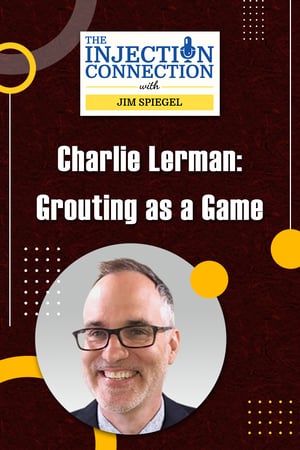 This article is an excerpt from
This article is an excerpt from 

 I don’t know what it is about this time of year but for some reason at the beginning of fall we receive the most tech support phone calls from slab lifting contractors. Some of it is related to the changing weather, but this past week several things happened that made me want to address a specific topic – the compressed air system of the polyurethane foam rig.
I don’t know what it is about this time of year but for some reason at the beginning of fall we receive the most tech support phone calls from slab lifting contractors. Some of it is related to the changing weather, but this past week several things happened that made me want to address a specific topic – the compressed air system of the polyurethane foam rig.

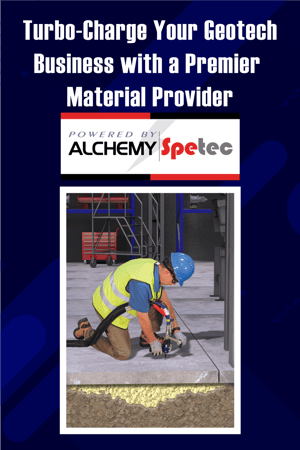 The choice of a polyurethane material provider for your geotechnical contracting business is a critical decision with far-reaching consequences. In addition to top quality concrete and soil repair material, a premier provider will offer reliable high-performance equipment, rock-solid tech support, extensive training resources and even marketing assistance.
The choice of a polyurethane material provider for your geotechnical contracting business is a critical decision with far-reaching consequences. In addition to top quality concrete and soil repair material, a premier provider will offer reliable high-performance equipment, rock-solid tech support, extensive training resources and even marketing assistance.
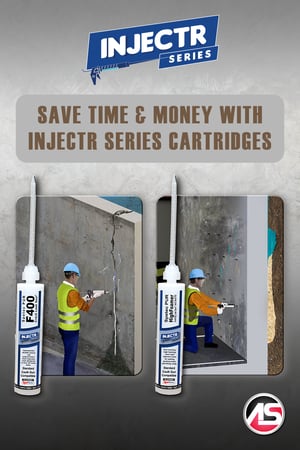 The INJECTR Series single cartridge houses grout and accelerator in two separate interior compartments. The grout and accelerator are thoroughly blended when injected through the static mixer. This cartridge is compatible with standard caulk guns.
The INJECTR Series single cartridge houses grout and accelerator in two separate interior compartments. The grout and accelerator are thoroughly blended when injected through the static mixer. This cartridge is compatible with standard caulk guns. 

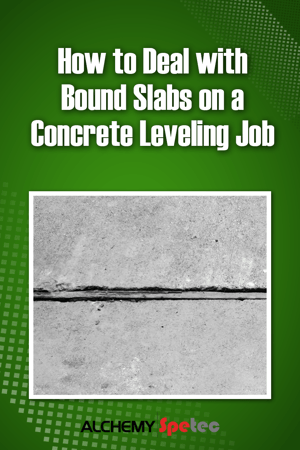
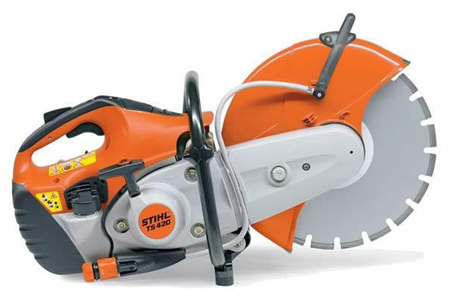


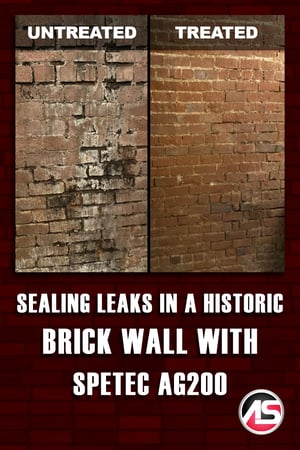 As the Director of Technical Services for the Leak Seal division at Alchemy-Spetec, I often find myself assisting customers with some interesting jobs. Such was the case when I was called in to consult with a contractor who was sealing a leak in a historic district below-grade, multi-course brick wall. As is often the case with below grade, historic spaces, water infiltration was unsightly, gave off a musty odor, and was damaging to finishes. This was a very old brick wall, approximately 8 x 15 feet in size and at least three courses thick. The owner wanted to find a way to waterproof this vintage brick structure while at the same time preserving its unique appearance. In addition to the water flow issue, the leaks were causing mold/mildew on the walls.
As the Director of Technical Services for the Leak Seal division at Alchemy-Spetec, I often find myself assisting customers with some interesting jobs. Such was the case when I was called in to consult with a contractor who was sealing a leak in a historic district below-grade, multi-course brick wall. As is often the case with below grade, historic spaces, water infiltration was unsightly, gave off a musty odor, and was damaging to finishes. This was a very old brick wall, approximately 8 x 15 feet in size and at least three courses thick. The owner wanted to find a way to waterproof this vintage brick structure while at the same time preserving its unique appearance. In addition to the water flow issue, the leaks were causing mold/mildew on the walls.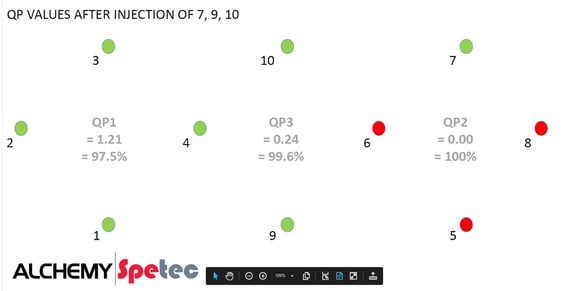
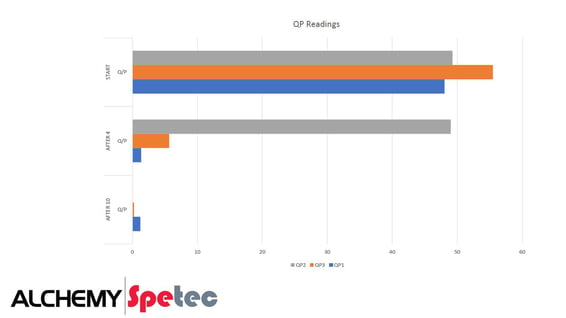

 On this episode of
On this episode of 